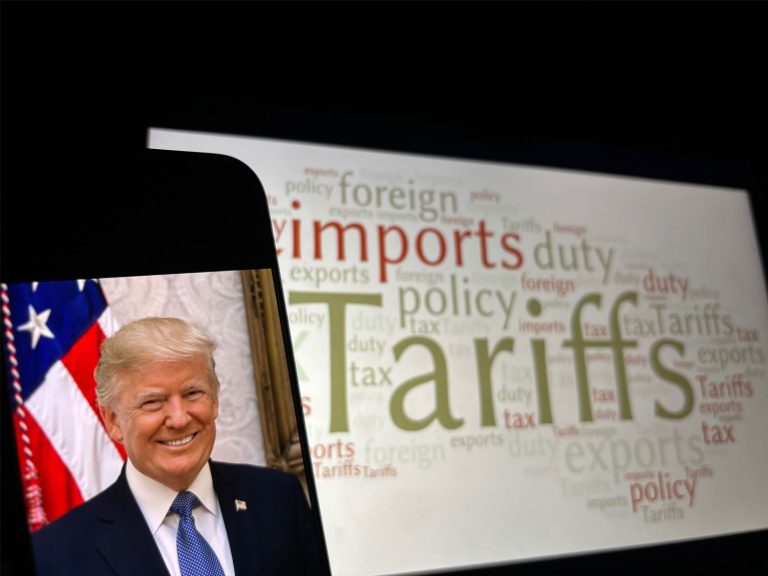
Date:
Progress and Paralysis in US Trade Policy
After weeks and months of economic tension and political uncertainty, a flurry of developments in early November have reshaped the outlook for US trade and logistics.
From tariff rollbacks to port fee suspensions, and a potential landmark Supreme Court ruling and continuing government shutdown, the policy landscape is shifting rapidly, bringing both relief and unease across global supply chains.
Tariffs Eased Under New US–China Agreement
The reduction of tariffs between the US and China took effect on 10 November, following a trade accord reached between Presidents Trump and Xi. The agreement lowers import duties on a wide range of goods, from agricultural products and industrial components to consumer electronics.
Importers welcomed the easing as a means to restore competitiveness and predictability in sourcing, with improved freight flows anticipated on trans-Pacific lanes. Analysts note that while the tariff cuts do not resolve underlying geopolitical tensions, they provide welcome breathing space for manufacturers balancing cost pressures and re-shoring considerations.
Port Fee Suspension Brings Relief to Carriers and Shippers
Complementing the tariff reductions, both Washington and Beijing have suspended reciprocal port fees for one year, from 10 November. The decision, announced 30 October, pauses the retaliatory levies that had been applied to vessels linked to either country.
The inclusion of RoRo and car carrier vessels in the suspension was particularly well received by the automotive and heavy-equipment sectors, which had faced additional costs on each port call.
The agreement is widely viewed as a pragmatic step toward de-escalation in maritime trade policy, easing operational costs for shipping lines and restoring confidence among automotive exporters and manufacturing supply chains reliant on consistent vessel rotation between US and Chinese ports.
Supreme Court Tariff Showdown: Uncertainty Persists
The fate of President Trump’s ability to impose sweeping tariffs remains unresolved, with the Supreme Court having recently heard oral arguments but yet to issue a ruling. Lower courts previously ruled against the administration’s use of emergency powers to levy broad tariffs under the International Emergency Economic Powers Act (IEEPA), but the decision has been put on hold pending Supreme Court review.
The justices are split, with three seen as likely to support Trump’s position, three clearly against, and three in the middle, making the outcome difficult to predict. During oral arguments, skepticism was evident from across the bench regarding whether the statute provides a president such expansive tariff powers without congressional authorisation.
If the Supreme Court rules against Trump, attention will turn to the array of alternative mechanisms available to maintain tariffs. Even without IEEPA authority, legal experts note that the administration could rely on statutes such as Section 301 of the Trade Act of 1974, which permits tariffs against unfair trading practices, or Section 338, a Depression-era law, which allows for steep duties of up to 50% if US businesses are discriminated against abroad. While each legal tool has varying thresholds and limitations, trade analysts are convinced there remain multiple pathways for the US to reimpose tariffs on targeted imports, underscoring the persistent uncertainty facing global shippers and manufacturers.
Government Shutdown Disrupts Trade Flows
Meanwhile, the US government shutdown, which began on 1 October, continues to disrupt logistics and international trade operations. Although a Senate compromise now appears close, any deal is likely to offer only temporary relief, funding government activities through January and leaving open the possibility of renewed disruption early next year.
While ports remain open, reduced staffing at US Customs and Border Protection has slowed documentation and inspection processes, lengthening clearance times and increasing dwell periods at major gateways such as Los Angeles-Long Beach.
Exporters are facing further obstacles as the Bureau of Industry and Security and the Directorate of Defence Trade Controls have paused most export licence reviews, while trucking and aviation sectors face delays in driver certification and airworthiness approvals.
Global supply chains are already feeling the ripple effects, with European and Asian manufacturers reporting shipment delays and additional inventory costs. The episode underscores the vulnerability of cross-border trade to US political impasse, a reminder that even as tariff and port fee tensions ease, operational continuity remains at the mercy of Washington’s budget negotiations.
With tariffs shifting, port policies evolving, and the risk of government shutdowns disrupting customs and regulatory processes, keeping your cargo moving demands proactive coordination and local expertise.
Metro’s US brokerage and logistics teams work closely with CBP and partner agencies to maintain clearance continuity and minimise disruption during periods of political or operational uncertainty. Supported by our CuDoS customs automation platform and expanding Metro Global USA network, we ensure every declaration meets filing deadlines accurately, efficiently, and fully compliant.
EMAIL Andrew Smith, Managing Director, to learn how Metro can help you navigate US trade policy changes, mitigate shutdown risks, and protect your supply chain from volatility.
